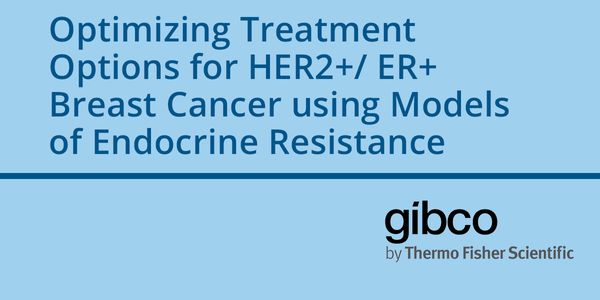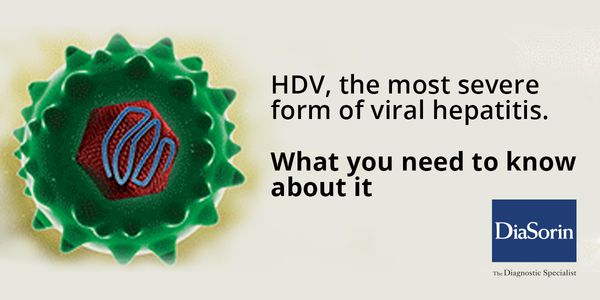Targeted Therapy
Targeted Therapy: one of the major modalities of medical treatment for cancer, others being hormonal therapy and cytotoxic chemotherapy.
-
JAN 31, 2019 | 10:30 AMMulti-mode chromatography has come to prominence in recent years due to the general utility of multi-mode ligands for product capture and polishing. In particular, their application in flow-t...Speaker: Buzz LobbezooJAN 31, 2019 | 7:30 AMProdrugs are harmless in their native state, as they are not targeted by human enzymes. But they can be converted into highly toxic compounds (the “drug”) by viral or bacterial en...JAN 29, 2019 | 9:00 AMDATE: January 29. 2019TIME: 09:00am PST, 12:00pm EST In healthy tissue, a reservoir of stem cells gives rise to non-stem cells while simul...DEC 13, 2018 | 9:00 AMDATE: December 13 15,2018TIME: 09:00am PST, 12:00pm EST Breast cancers are classified into three main subtypes according to their receptor status: estrogen receptor-positive...NOV 15, 2018 | 12:00 PMQIAGEN helps your team focus on the opportunities, not the obstacles, with an end-to-end clinical testing solution. During this talk, we will present a lung cancer case study to show how QIAG...Speaker: Raed Samara, PhD , Dan Richards, PhDNOV 15, 2018 | 9:00 AMClinical testing with next generation sequencing requires a complex bioinformatics pipeline to process raw DNA sequence into interpretable variants for medical reporting. With sequencin...NOV 15, 2018 | 6:00 AMDATE: November 15,2018TIME: 06:00am PST, 09:00am EST, 3:00pm CET Hepatitis D virus (HDV) is a unique RNA virus that requires the hepatitis B surface antigen (HBsAg) to...NOV 14, 2018 | 9:00 AMWith significant decrease in the cost of sequencing in numerous commercial as well as cancer center–driven initiatives, genomic profiling is increasingly becoming routine across multipl...Speaker: Bing Zhou, PhDNOV 14, 2018 | 6:00 AMSepsis is the Achilles’ heel of health care. Despite being relatively unknown to the public, it is a top killer in hospitals and the cost burden is crushing to our healthcare system. Mo...NOV 13, 2018 | 9:00 AMDATE: November 13, 2018TIME: 9:00am PST, 12:00pm ESTExtracellular vesicles (EVs) are cell-secreted nanoparticles that play a pivotal role in intercellular communic...NOV 01, 2018 | 12:00 AMThe success of immune checkpoint blockade adds a new therapeutic category to the cancer therapy repertoire. Despite efforts made on cancer cell and immune cell interaction, how cancer cells i...OCT 11, 2018 | 1:30 PMRecent work has identified epigenomic features of distal regulatory elements to be dynamic and defining indicators of cellular specification and transformation. Of particular relevance is our...Speaker: Martin Hirst, PhDOCT 11, 2018 | 12:00 PMAlthough targeted therapies often elicit profound initial patient responses, these effects are transient due to residual disease leading to acquired resistance. How tumors transition between...OCT 11, 2018 | 10:30 AMTwo projects looking at novel approaches to targeting inflammatory breast cancer will be presented. Inflammatory breast cancer (IBC) is a unique, understudied, and most lethal subtype account...Speaker: Kevin Williams, PhDOCT 11, 2018 | 9:00 AMThe oncogenic transcription factor c-MYC (MYC) is deregulated, and often overexpressed, in more than 50% of cancers. MYC deregulation is associated with poor prognosis and aggressive disease,...Speaker: Jason De Melo, PhDOCT 11, 2018 | 9:00 AMIn the last two decades, large amount of next-generation sequencing (NGS) and -omics data has been generated in the field of immuno-oncology. Generating hypotheses by analyzing hundreds if no...Speaker: Devendra Mistry, PhDOCT 11, 2018 | 7:30 AMIn the past two decades a small number of infrequently dividing cells have been proposed as the source of multi-drug resistance during cancer treatment. These cells identified by their expres...Speaker: Krastan Blagoev, PhDOCT 11, 2018 | 6:00 AMPacBio Sequencing simultaneously provides long sequence reads, high consensus accuracy, minimal sequence bias, and methylation detection. I will highlight new advances and updates on applying...Speaker: Jonas Korlach, PhDOCT 10, 2018 | 12:00 PMRNA sequencing unlocks the mysteries hidden in the transcriptome. Whether your goal is gene expression analysis, gene fusion analysis, SNP analysis or miRNA expression analysis, achieving hig...Speaker: Jonathan Shaffer, PhD, MBAOCT 10, 2018 | 10:30 AMPancreatic tumors are dynamic pseudo-organs that contain numerous cell types interacting to create unique physiology. A typical pancreatic tumor is made up largely of stromal fibroblasts and...Speaker: Costas A. Lyssiotis, PhDOCT 10, 2018 | 6:00 AMWith over 265,000 new cases per year and over 50,000 deaths, breast and ovarian cancers represent a significant health burden in the USA. Prior work has demonstrated that CD4 helper T c...Speaker: Keith Knutson, PhDOCT 03, 2018 | 1:30 PMGene editing using CRISPR is a very promising technology, and it has already had a significant impact on a number of research fields. However, while CRISPR makes targeted modifications easier...OCT 03, 2018 | 12:00 PMDecoding human genetic disease allows us to develop models of the pathology that can be directly tested with gene correction or targeted drug therapy. Dominant negative mutations are pa...OCT 03, 2018 | 10:30 AMThere have been an increasing number of successful human gene therapy clinical trials, and in particular gene delivery vehicles or vectors based on the adeno-associated virus (AAV) have enabl...
JAN 31, 2019 | 10:30 AM
Multi-mode chromatography has come to prominence in recent years due to the general utility of multi-mode ligands for product capture and polishing. In particular, their application in flow-t...
Speaker:
Buzz Lobbezoo
JAN 31, 2019 | 7:30 AM
Prodrugs are harmless in their native state, as they are not targeted by human enzymes. But they can be converted into highly toxic compounds (the “drug”) by viral or bacterial en...
JAN 29, 2019 | 9:00 AM
DATE: January 29. 2019TIME: 09:00am PST, 12:00pm EST In healthy tissue, a reservoir of stem cells gives rise to non-stem cells while simul...
DEC 13, 2018 | 9:00 AM
DATE: December 13 15,2018TIME: 09:00am PST, 12:00pm EST Breast cancers are classified into three main subtypes according to their receptor status: estrogen receptor-positive...
NOV 15, 2018 | 12:00 PM
QIAGEN helps your team focus on the opportunities, not the obstacles, with an end-to-end clinical testing solution. During this talk, we will present a lung cancer case study to show how QIAG...
Speaker:
Raed Samara, PhD
, Dan Richards, PhD
NOV 15, 2018 | 9:00 AM
Clinical testing with next generation sequencing requires a complex bioinformatics pipeline to process raw DNA sequence into interpretable variants for medical reporting. With sequencin...
NOV 15, 2018 | 6:00 AM
DATE: November 15,2018TIME: 06:00am PST, 09:00am EST, 3:00pm CET Hepatitis D virus (HDV) is a unique RNA virus that requires the hepatitis B surface antigen (HBsAg) to...
NOV 14, 2018 | 9:00 AM
With significant decrease in the cost of sequencing in numerous commercial as well as cancer center–driven initiatives, genomic profiling is increasingly becoming routine across multipl...
Speaker:
Bing Zhou, PhD
NOV 14, 2018 | 6:00 AM
Sepsis is the Achilles’ heel of health care. Despite being relatively unknown to the public, it is a top killer in hospitals and the cost burden is crushing to our healthcare system. Mo...
NOV 13, 2018 | 9:00 AM
DATE: November 13, 2018TIME: 9:00am PST, 12:00pm ESTExtracellular vesicles (EVs) are cell-secreted nanoparticles that play a pivotal role in intercellular communic...
NOV 01, 2018 | 12:00 AM
The success of immune checkpoint blockade adds a new therapeutic category to the cancer therapy repertoire. Despite efforts made on cancer cell and immune cell interaction, how cancer cells i...
OCT 11, 2018 | 1:30 PM
Recent work has identified epigenomic features of distal regulatory elements to be dynamic and defining indicators of cellular specification and transformation. Of particular relevance is our...
Speaker:
Martin Hirst, PhD
OCT 11, 2018 | 12:00 PM
Although targeted therapies often elicit profound initial patient responses, these effects are transient due to residual disease leading to acquired resistance. How tumors transition between...
OCT 11, 2018 | 10:30 AM
Two projects looking at novel approaches to targeting inflammatory breast cancer will be presented. Inflammatory breast cancer (IBC) is a unique, understudied, and most lethal subtype account...
Speaker:
Kevin Williams, PhD
OCT 11, 2018 | 9:00 AM
The oncogenic transcription factor c-MYC (MYC) is deregulated, and often overexpressed, in more than 50% of cancers. MYC deregulation is associated with poor prognosis and aggressive disease,...
Speaker:
Jason De Melo, PhD
OCT 11, 2018 | 9:00 AM
In the last two decades, large amount of next-generation sequencing (NGS) and -omics data has been generated in the field of immuno-oncology. Generating hypotheses by analyzing hundreds if no...
Speaker:
Devendra Mistry, PhD
OCT 11, 2018 | 7:30 AM
In the past two decades a small number of infrequently dividing cells have been proposed as the source of multi-drug resistance during cancer treatment. These cells identified by their expres...
Speaker:
Krastan Blagoev, PhD
OCT 11, 2018 | 6:00 AM
PacBio Sequencing simultaneously provides long sequence reads, high consensus accuracy, minimal sequence bias, and methylation detection. I will highlight new advances and updates on applying...
Speaker:
Jonas Korlach, PhD
OCT 10, 2018 | 12:00 PM
RNA sequencing unlocks the mysteries hidden in the transcriptome. Whether your goal is gene expression analysis, gene fusion analysis, SNP analysis or miRNA expression analysis, achieving hig...
Speaker:
Jonathan Shaffer, PhD, MBA
OCT 10, 2018 | 10:30 AM
Pancreatic tumors are dynamic pseudo-organs that contain numerous cell types interacting to create unique physiology. A typical pancreatic tumor is made up largely of stromal fibroblasts and...
Speaker:
Costas A. Lyssiotis, PhD
OCT 10, 2018 | 6:00 AM
With over 265,000 new cases per year and over 50,000 deaths, breast and ovarian cancers represent a significant health burden in the USA. Prior work has demonstrated that CD4 helper T c...
Speaker:
Keith Knutson, PhD
OCT 03, 2018 | 1:30 PM
Gene editing using CRISPR is a very promising technology, and it has already had a significant impact on a number of research fields. However, while CRISPR makes targeted modifications easier...
OCT 03, 2018 | 12:00 PM
Decoding human genetic disease allows us to develop models of the pathology that can be directly tested with gene correction or targeted drug therapy. Dominant negative mutations are pa...
OCT 03, 2018 | 10:30 AM
There have been an increasing number of successful human gene therapy clinical trials, and in particular gene delivery vehicles or vectors based on the adeno-associated virus (AAV) have enabl...
























